25 Legendary Sandwich Types That’ll Make Your Taste Buds Sing
Sandwiches represent a culinary canvas where bread becomes the foundation for endless flavor combinations.
Handheld meals that transcend simple sustenance, transforming ordinary ingredients into extraordinary experiences.
Cultures worldwide have embraced sandwich crafting as an art form, celebrating creativity between two slices.
Bread serves as more than a vessel; it connects tastes, textures, and traditions in one compact package.
Ingredients dance together, creating harmonies that delight taste buds and satisfy hunger with remarkable simplicity.
Global sandwich variations showcase incredible diversity, reflecting regional ingredients and cultural preferences.
Each sandwich tells a unique story of culinary innovation and personal expression.
You are about to uncover 25 legendary sandwich types that will revolutionize your understanding of this classic dish:
Legendary Sandwich Types You Need to Try
The world’s most famous sandwiches go far beyond the basics. Layered with savory fillings and fresh bread, these legendary creations make lunchtime something to celebrate, wherever you find yourself.
Banh Mi
Banh mi emerges as a mouthwatering Vietnamese sandwich blending French colonial bread with vibrant Vietnamese flavors.
French colonizers introduced the crispy baguette to Vietnam, which quickly became a culinary staple.
Traditional versions feature crusty bread filled with savory meats like pork or chicken, complemented by fresh cilantro and pickled vegetables.
Chili peppers and unique seasonings add a spicy kick to the sandwich's complex profile.
Vietnamese cooks transformed the simple bread into a multicultural flavor experience, combining French and Chinese culinary influences.
Pickled carrots and daikon radish provide tangy crunch alongside rich protein fillings.
Cilantro and cucumber contribute fresh, bright notes to each bite.
Modern banh mi variations showcase endless creativity with different proteins and innovative ingredient combinations.
Tortas
Mexican tortas emerge as hearty handheld sandwiches bursting with authentic flavors and diverse ingredients from Mexico's rich culinary landscape.
Bolillos and teleras serve as the signature bread rolls, split horizontally and buttered to create a perfect foundation for layered fillings.
Meat options range from crispy fried beef and shredded chicken to roasted pork, providing endless protein variations for hungry diners.
Classic ingredients like black beans, creamy avocados, spicy jalapeños, and melted queso transform these sandwiches into portable flavor bombs.
Teleras, originally from Puebla, represent a distinctly Mexican bread style that distinguishes tortas from standard sandwiches.
French culinary influences contribute to the bread's texture and preparation method, reflecting Mexico's complex gastronomic history.
Texas Brisket Sandwich
Texas brisket sandwiches represent a smoky, meaty masterpiece showcasing slow-cooked beef's ultimate potential through tender, flavor-packed meat nestled between soft bread.
Authentic versions emerge from generations of barbecue traditions rooted deep in Texas culture.
Skilled pitmasters transform tough beef brisket into melt-in-your-mouth slices through hours of careful smoking over low heat.
Brisket's rich marbling ensures incredible moisture and intense flavor in every bite.
Sandwiches can feature chopped or sliced meat depending on personal preference.
Home cooks and restaurants alike celebrate this iconic meat preparation.
Texans consider brisket sandwiches more than just a meal - they're a cultural experience celebrating meat mastery.
Po’Boy
Po'boy sandwich celebrates Louisiana's culinary creativity with its hearty French bread and diverse fillings.
New Orleans brothers Benny and Clovis Martin invented this iconic meal during a streetcar workers' strike in the early 1900s.
Workers would receive free sandwiches, with someone famously calling out "Here comes another po' boy" when they entered the shop.
French bread serves as the crispy foundation for endless protein combinations like roast beef, seafood, or meatballs.
Oysters and shrimp remain popular traditional fillings that highlight Gulf Coast ingredients.
Salt-of-the-earth workers inspired this sandwich's name and working-class origins.
Restaurants across Louisiana continue the Martin brothers' legacy by serving these generously stuffed sandwiches.
Regional pride and hospitality shine through every bite of this classic New Orleans meal.
Arepa
Arepas are golden corn-based flatbreads that embody Venezuelan culinary culture through their versatile and beloved status across all social classes.
Venezuelan families enjoy these crispy disks throughout the day, transforming simple ground corn dough into a satisfying meal with endless filling possibilities.
Traditional breakfast pairings include strong coffee and rich hot chocolate, enhancing the bread's savory profile.
Colombians and other Caribbean nations also embrace these corn-based treats as a staple food.
Each arepa reflects regional ingredients and cooking techniques, making them more than just bread.
Corn flour creates a crispy exterior and soft interior that welcomes creative fillings.
Regional cooks take pride in their unique arepa preparations, demonstrating the dish's deep cultural significance.
Montadito
Montaditos are small Spanish open-faced sandwiches originating from Spain's rich culinary tradition with roots tracing back to the fifteenth or sixteenth century.
Bread slices serve as the foundation for these versatile appetizers, typically cut from thin elongated bread similar to a baguette.
Toppings range dramatically from smoked meats and chorizo to seafood like anchovies and diverse cheeses with virtually unlimited combination possibilities.
Spanish bars and restaurants frequently serve montaditos as popular tapas that showcase regional ingredients.
Bread receives careful selection to ensure structural integrity and complementary flavor profiles.
Each montadito represents a miniature culinary canvas where ingredients are artfully arranged.
Small yet complex, these bite-sized sandwiches embody Spanish gastronomic creativity and spontaneity.
Grilled Cheese
Grilled cheese sandwiches blend melted cheese and toasted bread into a classic American comfort meal originating in the 1920s.
Bread slices get buttered outside and quickly grilled until golden brown and crispy.
Cheese varieties like cheddar, American, or Swiss create rich, gooey centers between warm bread layers.
Affordable ingredients made this sandwich popular during economic challenges like the Great Depression.
Simple cooking methods allow quick preparation in skillets or griddles.
Modern versions experiment with multiple cheese types and additional ingredients like bacon or tomatoes.
Traditional recipes remain a nostalgic favorite for many Americans seeking a warm, simple meal.
Bocadillos
Bocadillos are authentic Spanish sandwiches crafted on traditional baguettes, distinguishing them from standard white bread sandwiches.
Spanish locals prefer simple, rustic fillings like jamon, chorizo, tuna, or omelet ingredients without excess condiments.
Bread often receives a light rub of tomato or olive oil for enhanced flavor.
Omelet bocadillos typically serve as breakfast or afternoon snack options.
Fillings frequently combine eggs, cheese, beans, and peppers.
Most sandwiches remain minimalist, focusing on quality ingredients and authentic preparation.
Spanish culinary traditions emphasize simplicity and fresh components in these beloved street foods.
Smrrebrd
Smørrebrød are Danish open-faced sandwiches that revolutionized simple meal preparation with layered culinary creativity.
Originating in 19th century Denmark among agricultural workers, these sandwiches transformed leftover ingredients into nutritious meals for laborers.
Nordic farmers crafted these sandwiches using buttered rye bread as a foundation for multiple toppings like cold cuts, seafood, and spreads.
Meatballs, caviar, herbs, and vegetables commonly adorned these versatile sandwiches.
Mayonnaise and other condiments added extra flavor complexity to each unique creation.
Traditional combinations often featured herring, salmon, or roast beef as primary protein selections.
Smørrebrød design emphasized visual appeal and taste balance through carefully arranged ingredients.
Each sandwich told a story of resourcefulness and regional Danish culinary traditions.
Italian Sandwich
Italian sandwich dominates street food culture with its hearty combination of Italian-American ingredients packed into a crusty bread roll.
Giovanni Amato pioneered this affordable meal in Portland, Maine, around 1899 as quick sustenance for hardworking road construction workers.
Layers of provolone cheese, salami, mortadella, and ham create a robust flavor profile enhanced by fresh tomatoes, olives, pickles, and onions.
Regional Maine stores and sandwich shops now widely embrace this portable lunch option.
Workers initially appreciated its convenient size and satisfying taste.
Italian immigrants transformed simple ingredients into an iconic American sandwich.
Bread rolls provide a sturdy foundation for the rich meat and cheese combinations.
Generations have continued enjoying this affordable, compact meal that reflects immigrant culinary innovation.
Melt Sandwich
Grilled cheese sandwiches showcase melted cheese pressed between crispy toasted bread slices as classic comfort food across North America.
Bread choices range from white to sourdough, with sharp cheddar, American, or Swiss cheese creating signature flavor profiles.
Butter or mayonnaise helps create golden, crunchy exteriors when griddled in a skillet or panini press.
Basic versions include simple cheese between two bread slices, while gourmet variations add ham, tomatoes, bacon, or caramelized onions.
Sandwich preparation involves spreading butter on bread exteriors before grilling until cheese melts completely.
Restaurant menus frequently feature multiple versions with regional ingredient twists.
Home cooks often customize recipes based on available ingredients and personal taste preferences.
Cheese selection dramatically impacts overall sandwich flavor and texture.
Breakfast Sandwich
Breakfast sandwiches pack protein-rich morning meals between two slices of bread, originating from 19th-century London factory workers' quick sustenance.
London bap sandwiches featured soft rolls stuffed with fried eggs, crispy bacon, and melted cheese, creating a portable meal for industrial workers.
American versions emerged during the industrial revolution, incorporating eggs, green peppers, onions, and ham as standard ingredients.
Workers appreciated these hearty sandwiches for their convenience and nutritional value.
Cookbooks first documented breakfast sandwich recipes around 1897, marking their official culinary debut.
Modern variations include countless bread types, protein options, and regional flavor combinations.
Gourmet and fast-food restaurants now offer sophisticated and simple breakfast sandwich interpretations.
Convenience stores and coffee shops have made these sandwiches a mainstream breakfast staple across North America.
Strammer Max
Strammer Max represents a classic German open-faced sandwich bursting with hearty flavors and simple ingredients.
Berlin embraces this quick meal as a staple street food featuring crispy bread topped with savory ham and a perfectly fried egg.
Germans traditionally prepare the sandwich using rye or wheat bread, which gets toasted or fried in butter until golden brown.
Cooks season the bread with salt, pepper, and optional mustard before layering thin slices of cured ham across the surface.
Crowning the sandwich, a sunny-side-up egg adds rich protein and visual appeal to this satisfying dish.
Despite its simplicity, this sandwich remains a beloved comfort food that reflects German culinary traditions.
Chicken Sandwich
Chicken sandwiches revolutionize quick meals with versatile protein options ranging from shredded to deep-fried meat nestled between bread slices or buns.
Fast food restaurants popularized these sandwiches as affordable beef alternatives, creating widespread menu availability across North America.
Eastern Canadian hot chicken sandwiches distinguish themselves by serving breaded chicken covered in gravy, typically accompanied by peas and eaten with utensils.
Bread selections include traditional loaf slices, rolls, and buns, allowing endless customization.
Meat choices span white and dark chicken cuts prepared through multiple cooking methods.
Toppings further personalize each sandwich, making them adaptable to individual preferences.
Global interpretations demonstrate chicken sandwiches' culinary flexibility and universal appeal.
Tramezzino
Tramezzini are elegant Italian sandwiches crafted with soft white bread trimmed of crusts and filled with savory ingredients like tuna, prosciutto, and mayonnaise.
Originating in 1925 at Turin's Caffe Mulassano, these triangular snacks quickly became a beloved street food across Italy.
Venice embraced tramezzini as a perfect companion to Spritz aperitivo drinks.
Cafes throughout the country serve fresh versions of these sandwiches, while supermarkets also offer convenient pre-packaged options.
Soft white bread ensures a delicate texture and clean eating experience.
Most tramezzini feature simple, high-quality ingredients carefully layered between bread slices.
Italians enjoy these compact sandwiches as quick lunch or afternoon snack options.
Chlebicky
Chlebicky are distinctive Czech open-faced sandwiches celebrated for their intricate layers of flavor and precise visual composition.
Prague's Jan Paukert pioneered these miniature culinary masterpieces in the early 20th century, crafting an original version with Prague ham, hard-boiled egg, Emmental cheese, tomato, Hungarian salami, and potato salad.
Thin white bread serves as the foundation for an elaborate array of toppings like cream cheese, lobster paste, salmon, capers, Brie, and cooked ham.
Each sandwich represents a carefully constructed miniature artwork with ingredients strategically placed for maximum visual and gustatory appeal.
Czech restaurants and home cooks meticulously arrange these small sandwiches to showcase contrasting colors, textures, and flavors.
Traditional chlebicky highlight local ingredients and reflect sophisticated Czech gastronomic sensibilities.
Small yet complex, these bite-sized delicacies offer a remarkable glimpse into Czech culinary creativity.
Sandwiches De Miga
Sandwiches de miga are elegant Argentine finger sandwiches crafted from crustless white bread with sophisticated European culinary roots.
British and Italian immigrant influences shaped these delicate multi-layered snacks during early 20th-century Buenos Aires.
Argentines serve these sandwiches across various social settings from afternoon tea to festive celebrations and family gatherings.
Mayonnaise, ham, and cheese form the classic filling combination, though creative variations abound.
Traditional versions include an atostado variant served warm and crispy.
Multiple bread slices can stack together to create complex sandwich structures.
Generations of Argentine families have embraced these lightweight, flavorful bread parcels as a cherished social dining tradition.
Panuozzo Di Gragnano
Panuozzo di Gragnano represents a mouth-watering Italian street food innovation originating from Naples, crafted by Giuseppe Mascolo in 1983.
Signature pizza dough transforms into a large oval bread when baked in a wood-fired oven, creating a crispy exterior that sets this sandwich apart from traditional options.
Mascolo's family has exclusively owned the Panuozzo trademark since 1996, ensuring authentic preparation methods.
Bakers slice the freshly baked bread lengthwise and stuff it with carefully selected ingredients.
After initial baking, the sandwich receives a quick second oven visit to meld flavors and enhance texture.
Regional ingredients often include local meats, cheeses, and vegetables.
Naples celebrates this innovative street food as a testament to culinary creativity.
Giuseppe Mascolo's invention continues to delight food enthusiasts across Italy.
Submarine Sandwich
Submarine sandwiches are iconic American street food featuring long bread rolls stuffed with layers of meats, cheeses, vegetables, and sauces across regional variations.
Submarine sandwiches earned their name from resembling naval submarines with their elongated shape and packed ingredients.
Regional names include grinder in Midwest and California, hero in New York and Northern New Jersey, sub in Delaware, hoagie in Baltimore and Philadelphia, po'boy in New Orleans, and Italian sandwich in Maine.
Different communities developed unique naming conventions based on local dialect and cultural influences.
Italian immigrants likely introduced the sandwich concept to American cities in early 20th century.
Bread rolls typically measure 6-12 inches long and include soft, crusty exteriors.
Meat selections range from turkey and ham to roast beef and salami.
Condiments and toppings add flavor complexity and personal customization.
Submarine sandwiches remain popular fast-food options across United States restaurants, delis, and casual dining establishments.
Torta Cubana
Torta Cubana bursts with multiple meats and bold flavors in a massive Mexican street sandwich originating from Mexico City's bustling Republic of Cuba Street in the 1950s.
Street vendors crafted this hearty meal by piling various available proteins between crusty bread slices, creating a unique handheld feast.
Each torta differs dramatically depending on the maker's ingredients and regional preferences.
Typical fillings include ham, pork, beef, sausage, and breaded chicken or steak.
Melted cheese, avocado, tomatoes, and spicy jalapeños often enhance the sandwich's complexity.
Mayonnaise, mustard, and salsa frequently add extra moisture and zest to the multilayered creation.
Mexican workers and students especially love this affordable, filling sandwich as a quick midday meal.
Travelers seeking authentic street food consider torta Cubana a must-try Mexican culinary experience.
Trzesniewski Sandwiches (Trzesniewski Brotchen)
Trzesniewski brotchen are compact, flavor-packed open-faced rye bread sandwiches pioneered by Polish immigrant Franciszek Trzesniewski in Vienna during 1902.
Small rectangular slices serve as perfect canvases for an impressive array of traditional spreads ranging from bacon with egg to smoked salmon and paprika.
These bite-sized Austrian specialties feature precisely crafted toppings following original recipes unchanged for over a century.
Trzesniewski's flagship location on Dorotheergasse Street continues attracting locals and tourists seeking authentic quick bites.
Twenty-six distinct variations showcase meticulous preparation techniques inherited from founder Franciszek.
Vienna's culinary landscape embraces these miniature sandwiches as quick, satisfying street food.
Each brotchen represents a snapshot of Austrian gastronomic tradition.
Visitors can sample multiple flavors in single sitting, making these sandwiches ideal for adventurous eaters.
Egg Sandwich
Egg sandwiches deliver global breakfast comfort with a simple yet satisfying combination of eggs nestled between bread slices.
Street vendors in East London pioneered this handheld meal in the early 19th century as an affordable option for hungry factory workers.
Quick protein-packed meals spread quickly across different cultures, spawning countless regional variations.
Classic versions often include melted cheese and protein like ham or bacon.
Bread choices range from soft white to hearty whole wheat, allowing personal customization.
Seasoning with salt, pepper, and herbs elevates the basic sandwich.
Street food origins highlight its working-class roots and practicality.
Modern egg sandwiches appear in cafes, food trucks, and home kitchens worldwide as a beloved morning staple.
Smorgastarta
Smorgastarta is a savory Swedish sandwich cake layered with bread, proteins, and creamy spreads that transforms ordinary ingredients into an extraordinary culinary masterpiece.
Swedish gatherings often feature this unique dish as a centerpiece that combines multiple flavor profiles in one impressive creation.
Rye or white bread serves as the cake's foundation, carefully stacked with various fillings like smoked salmon, shrimp, cold cuts, and eggs.
Cream cheese, mayonnaise, or yogurt acts as the "frosting" that binds the layers together and adds richness.
Fresh vegetables provide color and crunch across the cake's surface.
Traditional preparations embrace flexibility, allowing hosts to customize ingredients based on availability and preference.
Each slice reveals intricate layers of carefully arranged ingredients that surprise and delight guests.
Fat Sandwich
Fat sandwiches are massive submarine-style meals bursting with fried ingredients that originated at Rutgers University as late-night student favorites.
Overstuffed with gyro meat, chicken strips, french fries, and mozzarella sticks, these calorie-dense creations emerged from campus food trucks along College Avenue.
Students returning from evening parties would crowd around these trucks seeking substantial meals to satisfy extreme hunger.
Greasy and loaded with multiple protein and carbohydrate sources, fat sandwiches became a signature campus comfort food.
New Brunswick students pioneered this unique sandwich style that combines multiple fried elements between bread slices.
University culture transformed these sandwiches into an iconic regional meal.
Portion sizes often exceed traditional sandwich expectations.
Maximum flavor and maximum fullness define fat sandwiches as an indulgent eating experience.
Panonta
Panonta represents a massive, multilayered Italian sandwich originating from rural Abruzzo regions, traditionally crafted by shepherds and farmers needing substantial midday sustenance.
Mountain workers designed this hearty meal using homemade bread sliced and generously brushed with bacon grease or lard, creating a rich base for multiple flavor-packed layers.
Strategic ingredients typically include crispy fried bacon, spicy sausages, roasted peppers, fluffy frittata, sharp grated cheese, aromatic garlic, and fresh parsley.
Named from "pane unto" meaning greased bread, this sandwich embodies rustic Italian culinary practicality.
Rural workers designed panonta as a portable, energy-dense meal that could withstand long working hours in challenging mountain landscapes.
Its robust construction ensures maximum nutrition and flavor in a single, substantial sandwich.
What Sandwich Styles Are Most Popular in Street Food Scenes?
Street food sandwiches offer a delicious window into local cultures, with styles varying widely but often sharing common traits like portability, bold flavors, and fresh ingredients. Some of the most popular sandwich styles include:
These sandwiches highlight the creativity and regional flavors that make street food so vibrant and beloved globally.

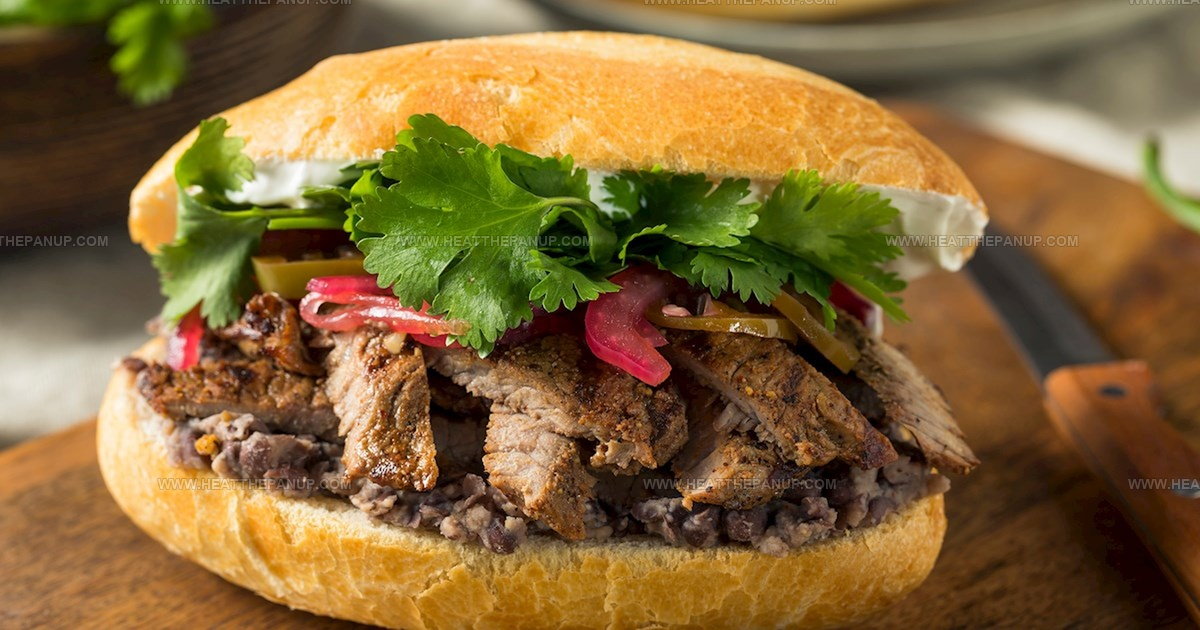
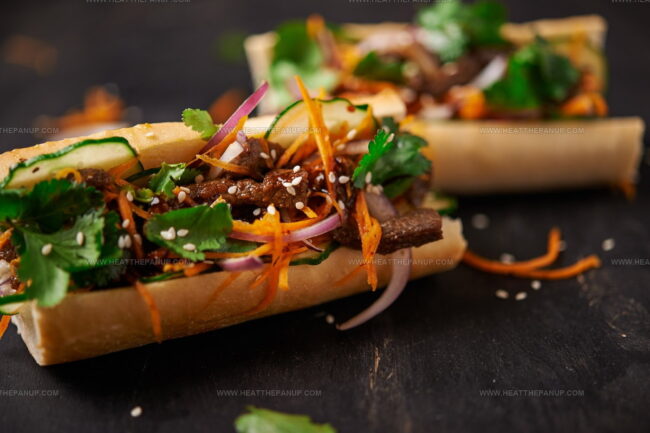
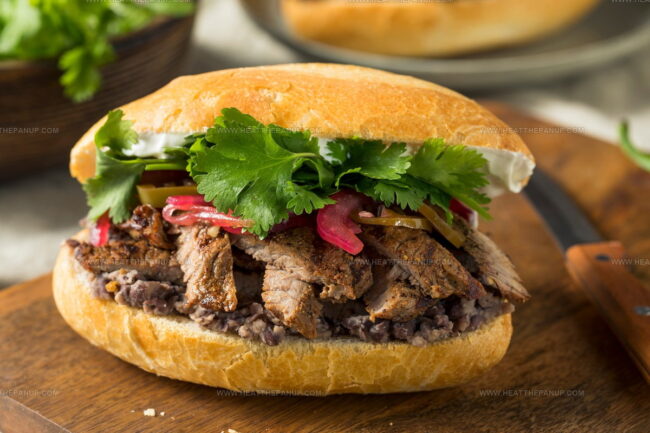
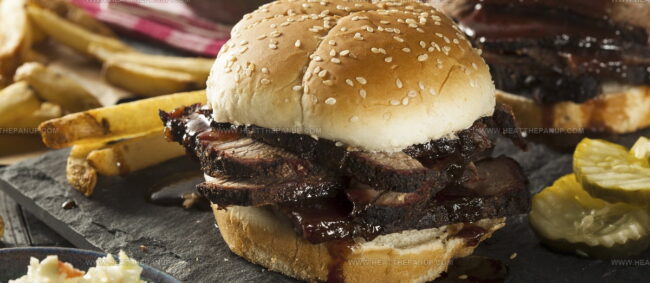
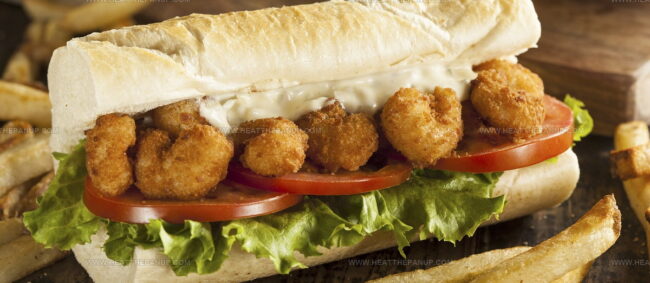
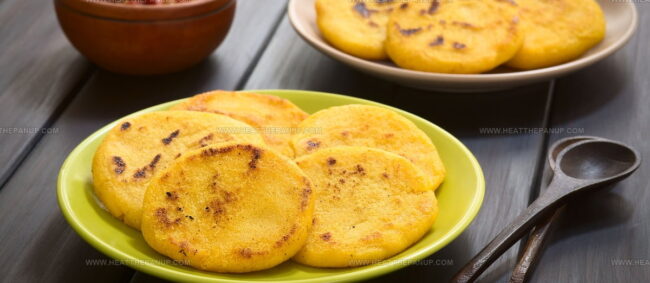
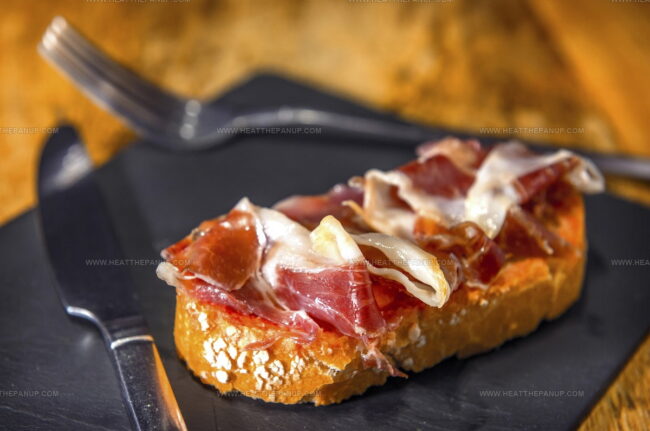
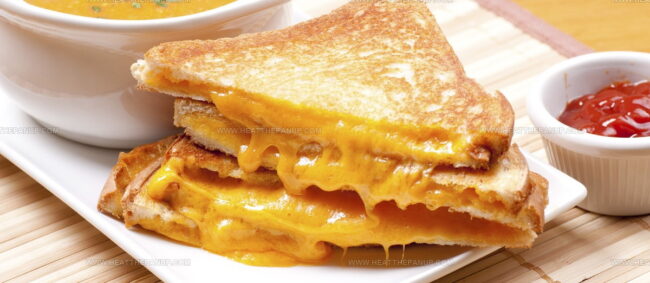
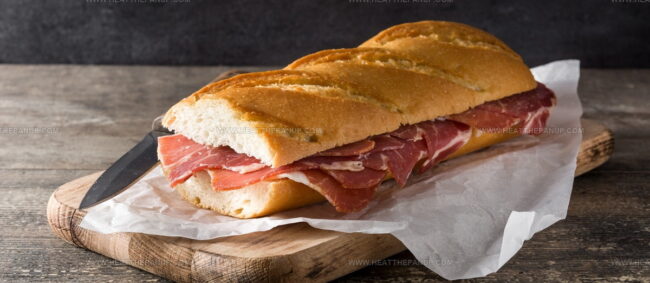
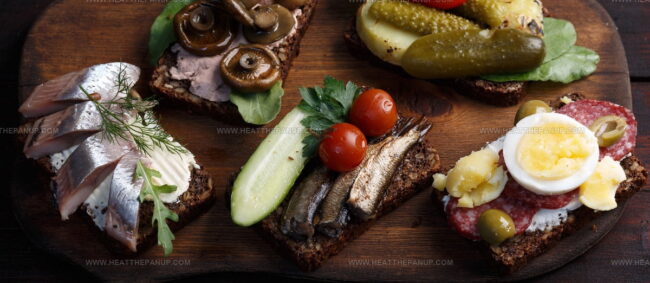
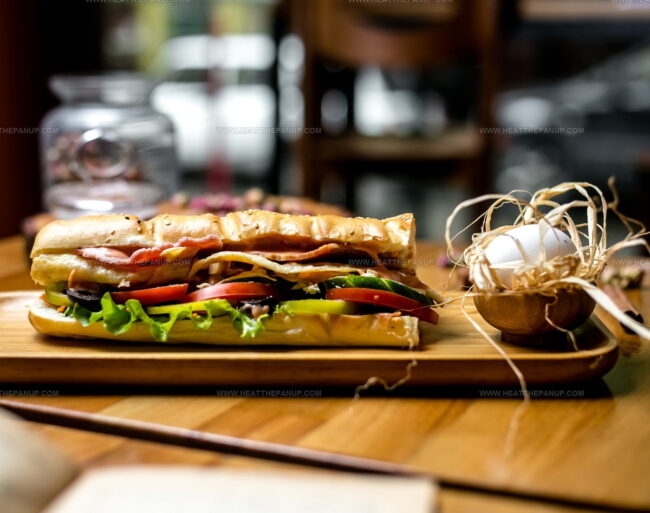
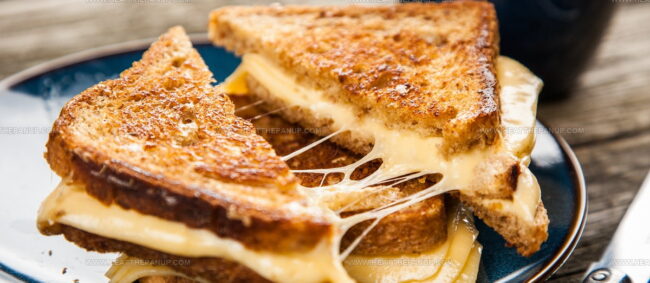






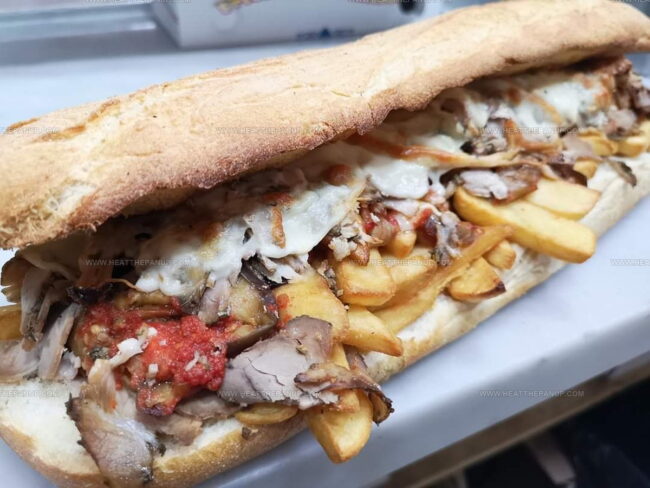
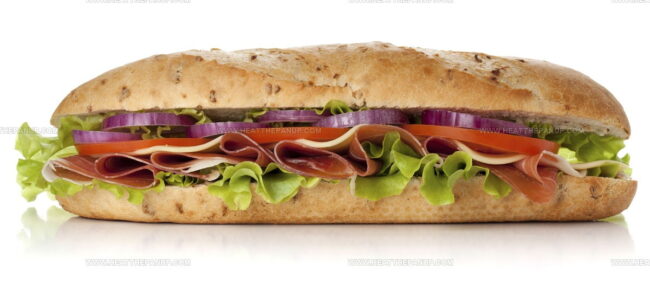
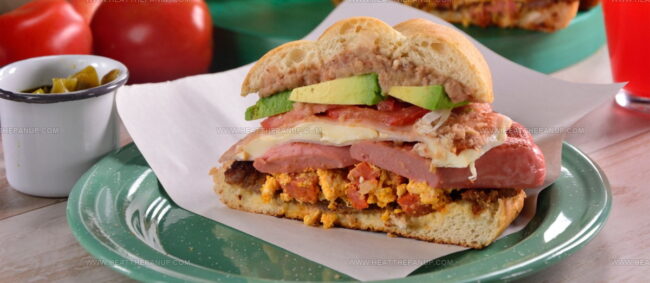
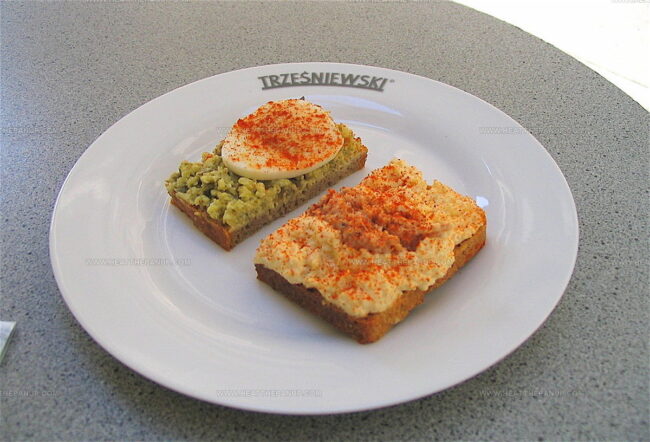

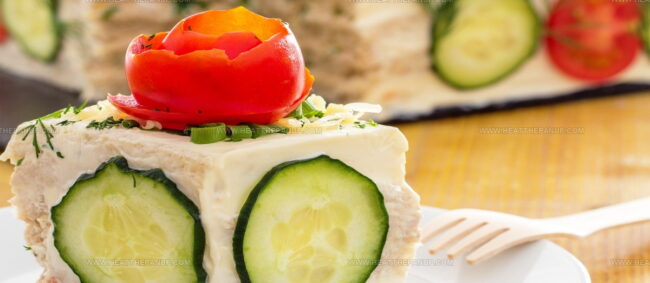

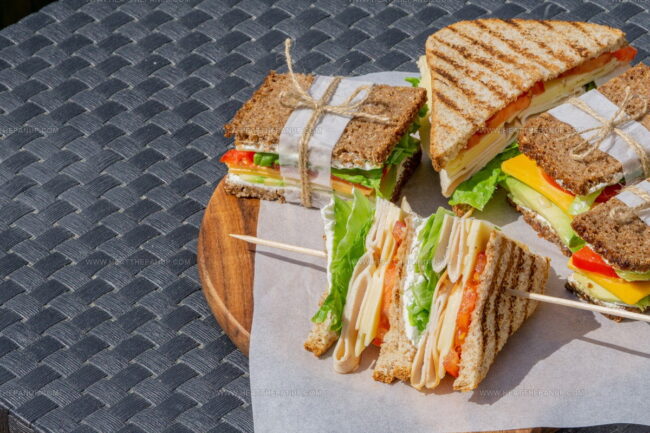
Angelina Wiles
Content Editor & Culinary Enthusiast
Expertise
Food Writing and Editing, Vegetarian and Vegan Cuisine, Baking and Pastry Arts, Sustainable Cooking Practices
Education
Portland Community College
Certificate in Culinary Arts
Focus: Emphasis on sustainable cooking practices, vegetarian cuisine, and food writing.
Oregon Culinary Institute
Diploma in Baking and Pastry Arts
Focus: Specialized training in artisanal baking, pastry techniques, and dessert presentation.
Angelina’s love for cooking started with handwritten family recipes and weekend trips to farmers’ markets around Portland. She followed her passion with a Certificate in Culinary Arts from Portland Community College, then perfected her sweet side with a Diploma in Baking and Pastry Arts at Oregon Culinary Institute.
Angelina believes recipes should feel like a conversation, not a science project. She’s all about helping readers trust themselves in the kitchen with simple steps, fresh ideas, and easy twists on classic meals.
When she’s not editing recipes, she’s baking bread, sipping coffee, or getting inspired by the changing seasons.